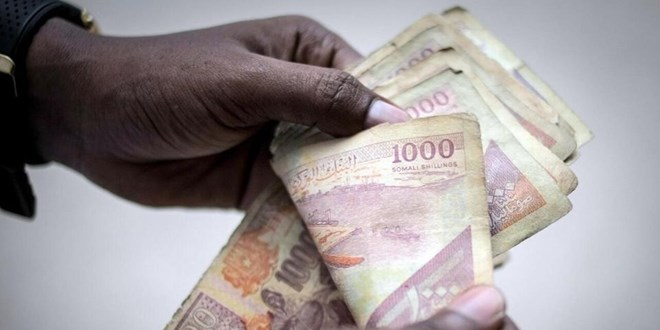African nations turn to currency redesign to tackle graft, inflation

Source: The Citizen, Friday February 17, 2023

A man holding Somali shilling notes after having exchanged US dollars with a money changer in Mogadishu, 23 October 2013.
Nairobi. African countries are turning to new-generation banknotes to help curb corruption, runaway inflation and money laundering.
From simple alterations like changing colour schemes to complex modifications incorporating embedded security features, central banks in Nigeria, Somalia, and Central African States have demonetised older series banknotes.
Somalia is the latest country to announce plans to replace its old 1,000-shilling notes, last printed in 1991.
The country’s central bank has set mid-2024 as the deadline to replace the only high-value currency note still in use, to deal with counterfeit bills, excess cash in circulation and inflation.
“The new issuance will combat illicit funds and curb inflation by mopping up excess liquidity,” said Somalia Central Bank Deputy Governor Ali Yasin Wardhere in an interview with Bloomberg.
An influx of fake currency has been linked to high inflation and corruption rates, with many people subsequently forced to revert to US dollars.
The latest Corruption Perception Index by Transparency International ranks Somalia at the bottom (position 180) globally.
Besides Somalia, Nigeria is also currently replacing its currency notes to prevent hoarding, contain inflation and address counterfeiting.
In November 2022, the Central Bank of Nigeria (CBN) unveiled new 1,000, 500, and 200 naira notes to replace some 2.7 trillion naira ($5.85 billion) in cash held outside the country’s banking system.
“So far and since the commencement of this program, we have collected 1.9 trillion naira, leaving us with about 900 billion,” CBN Governor Godwin Emefiele shared in a press release last month.
According to CBN data, currency in circulation in Nigeria had more than doubled from US$3 billion in 2015 to US$7 billion in October 2022.
However, only US$1 billion (500 billion naira) of that could be traced within the banking industry, with some US$5.85 billion (2.7 trillion naira) held ‘permanently’ in people’s homes.
“We also aim to support efforts of security agencies in combating banditry and ransom-taking in Nigeria through this program,” the statement read.
CBN had set February 10 2023, as the deadline for using the old notes, after which they would be rendered illegal.
However, the country’s supreme court on February 8 blocked the central bank’s plan and adjourned the matter until February 15.
“We were successful in obtaining an interim injunction against the February 10 Central Bank of Nigeria deadline for use of the old notes until the determination of the substantive suit,” said Aisha Dikko, the attorney general of the Kaduna state government in northern Nigeria.
The Central African States of Cameroon, the Central African Republic, Chad, Congo, Equatorial Guinea, and Gabon have also begun using redesigned and upgraded currency notes that began circulating in mid-December 2022.
“From December 15, 2022 the Bank of Central African States (BEAC) puts into circulation its new range of “type 2020” bank notes. More compact, more mordern and better secure,” BEAC posted on its website.
A salient feature in all the five upgraded denominations of the franc (XAF) banknotes (500, 1000, 2000, 5000 and 10,000) is the representation of four official languages in Central Africa.French and Arabic features are on the front of the notes, while English and Spanish have been used on the reverse sides. The notes come embedded with solid security threads, a watermark (three eland antelope heads), and different electrotype grades depending on the value of currency notes.
Also included are special features that can be felt by hand by the visually impaired – one line for 500, two for 1,000, three for 2,000 and five for 10,000 notes.
Other notable features include the BEAC headquarters building, a stylized outline of Africa in diamonds and the Central African Economic and Monetary Community (CEMAC) logo.
The Central African Monetary Union (UMAC) announced that the current 1992 generation of banknotes would cease to serve as legal tender in the region from March 2023.
In July 2022, Sierra Leone also introduced a new family of banknotes, stripping three zeros off the leone to restore confidence in the inflation-hit national currency.
In 2019, Kenya withdrew its 1,000 shilling notes to crack down on embezzlement and tackle a wave of counterfeiting
